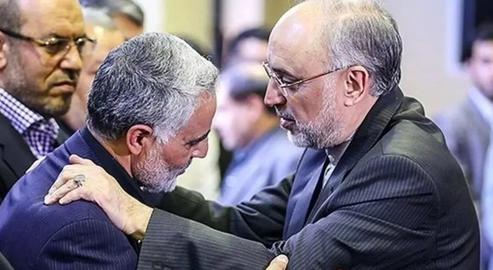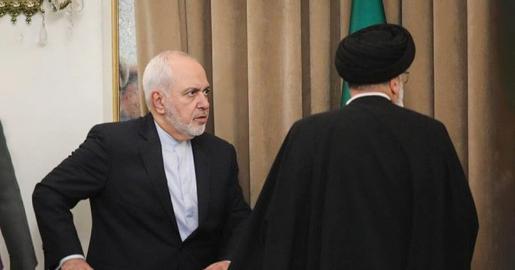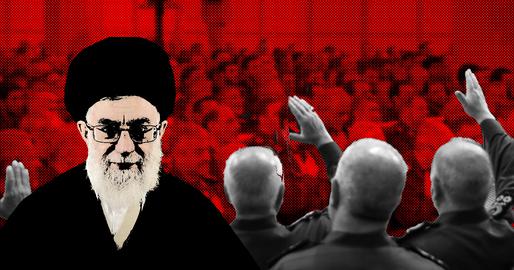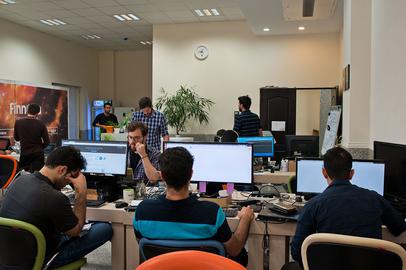This week the Islamic Republic of Iran observed the second anniversary of the US killing of Ghasem Soleimani, commander of the IRGC’s expeditionary Quds Force. A reported 10,000 events have taken place across the country, with tributes paid in the media, on state TV, in commemorative films and publications, and in cyberspace. Those who had known the general in seemingly any capacity took the opportunity to pour forth their memories of him.
One of them was Ali Akbar Salehi. In an interview with an Iranian newspaper on January 1, the politician said he had regularly consulted with Soleimani during his tenure as foreign minister under Mahmoud Ahmadinejad, from 2011 to 2013. He also talked about his trip to Libya, with Soleimani’s blessing, after the downfall of Muammar Gaddafi – and the story he told raises the strong suspicion that the Iranian Red Crescent Society might have been improperly used by the IRGC.
“When things happened in Libya and the country fell apart,” Salehi recalled, “I consulted with the General and we agreed I should pay a visit to Libya. The visit took place shortly after Gaddafi had gone, and the clashes were still ongoing. In Libya I witnessed that our friends in Quds Force quickly made it possible, with the help of the Red Crescent, to make prostheses for a number of Libyan revolutionaries who had been maimed. This shows you the compassion of Commander Soleimani for the people.”
These statements showed less about the character of Commander Soleimani than it did the possible compromising of the Irqnian Red Crescent. Naturally, as long the NGO has not been used as a cover for military purposes no official transgression has taken place – had its emblem been used to further armed conflict it could be considered a war crime. However, the fact that a delegation accompanied the Quds Force in the first place is unusual.
Is there a Precedent for the IRGC Misusing the Red Crescent?
In a statement that made waves in 2019, retired Revolutionary Guards general Commander Saeed Ghasemi claimed that during the 1992-1995 Bosnian War the IRGC had trained jihadist forces in the former Yugoslavia and collaborated with Al-Qaeda in Europe under cover of the Red Crescent. Jihadists trained by the Guards, he said, had posed as Red Crescent personnel, using their uniforms and insignia. “We were there, posing as members of the Red Crescent, to provide military training to Mujahideen forces,” he stated.
The Iranian Red Crescent released a statement in response saying it never allows military forces to use its either uniforms or its insignia. “According to the four treaties of the Geneva Convention, we are neutral in armed conflicts because our task is to support humanity and to help civilians,” it read. “If an individual or organization has used the uniform and insignia of Iran’s Red Crescent Society, it must have been without [our] cooperation.”
In his throwaway comment on January 1, Salehi did not clearly explain how the Iranian Red Crescent had established facilities in which to help the “Libyan revolutionaries”. But if they entered Syria alongside the Quds Force, with their flags and insignia visible, the NGO may have unintentionally aided the incursion of a military organization into Libyan territory.
Red Crescent Neutrality
According to the four Geneva Conventions of 1949 and their additional protocols, relief and rescue workers of Red Cross and Red Crescent societies are to remain neutral in armed conflicts. Their mission is to save lives, and support people regardless of political or military affiliation, in exchange for the ability to freely move in conflict zones. Under no circumstances may they take action to benefit one party or the other militarily.
Salehi explicitly states that “Libyan revolutionaries” were aided by the Red Crescent in collaboration with the Quds Force during a period of internal fighting. This, arguably, did aid one side in precisely the way the Islamic Republic would have wanted.
Iran joined the Geneva Conventions in 1955 under the Shah, when the domestic arm of the Red Crescent was known as the Red Lion and Sun Society. These treaties are binding on countries, rather than states or governments, meaning Iran remains constitutionally bound to their provisions and Islamic Republic cannot withdraw from them.
Abusing the insignia and the flag of the Red Crescent, or using its medics to benefit one side in a conflict for military gain, would be a violation of these principles – at worst, depending on the circumstances, a prosecutable one. The Iranian authorities should investigate further off the back of Salehi’s statements. Even if the Iranian Red Cross were compromised in this way unintentionally, the harm to this NGO’s reputation could be devastating.
Related Coverage:
visit the accountability section
In this section of Iran Wire, you can contact the officials and launch your campaign for various problems


























comments